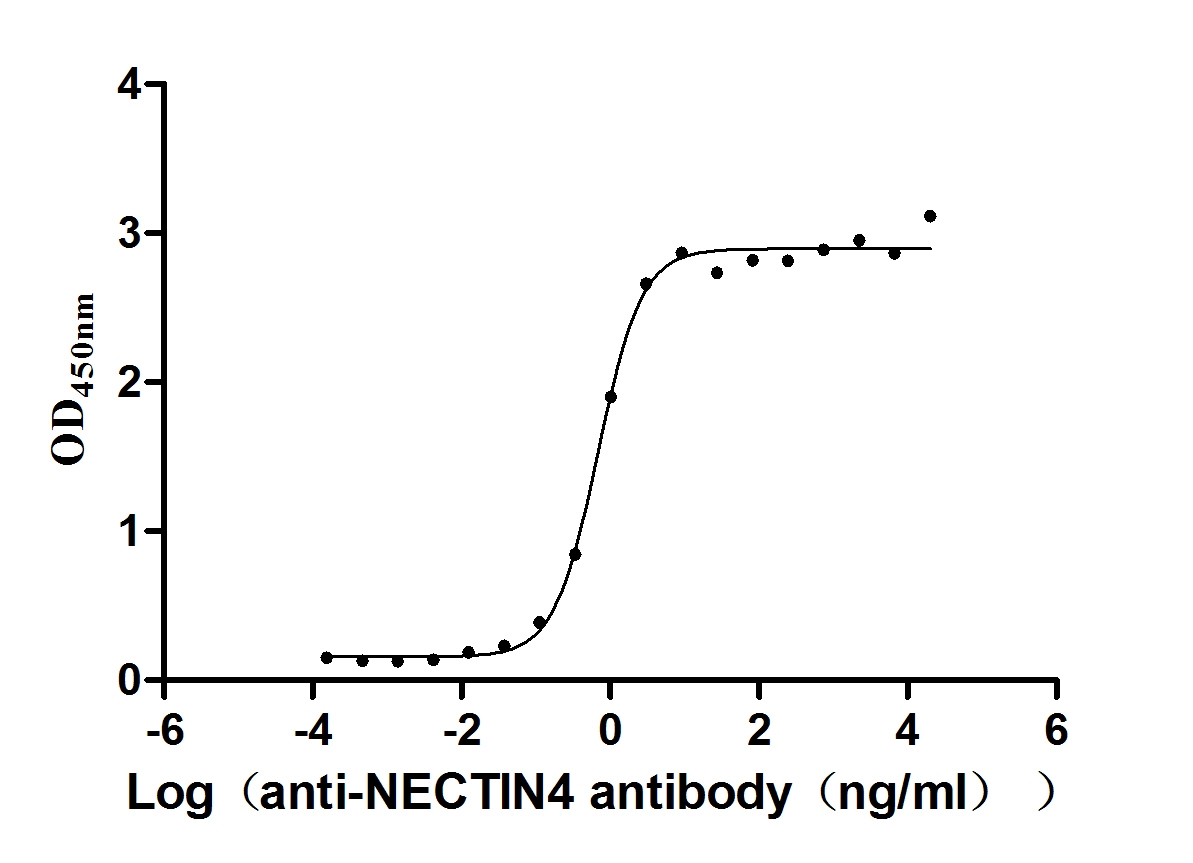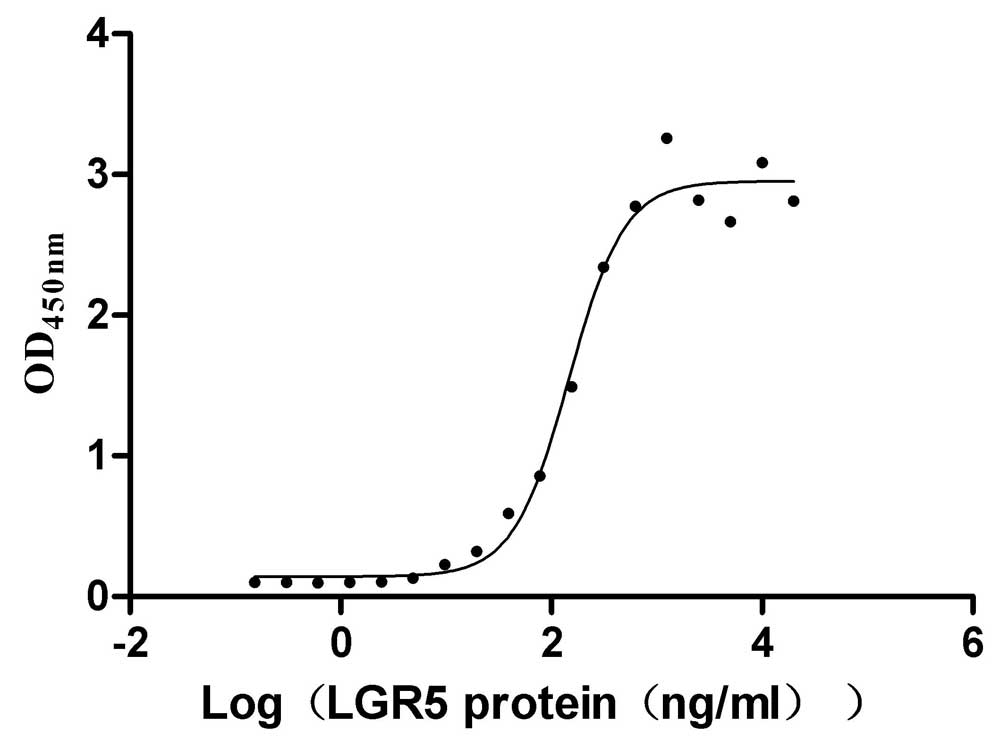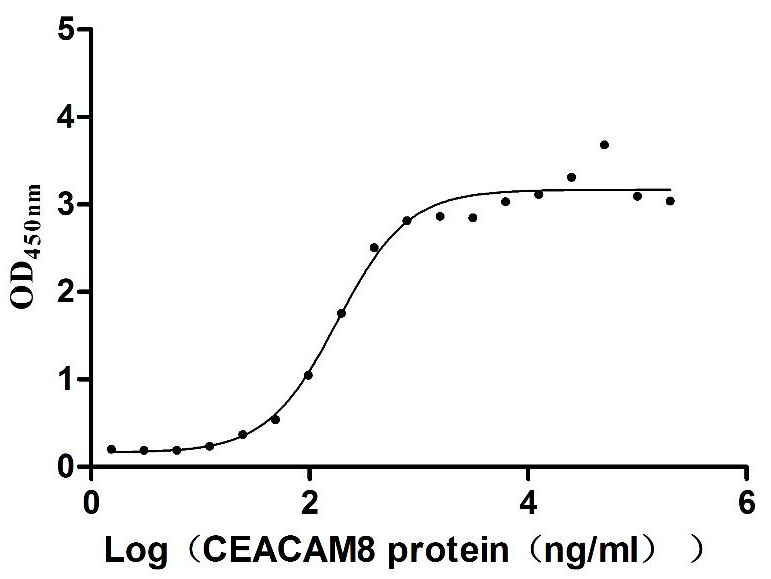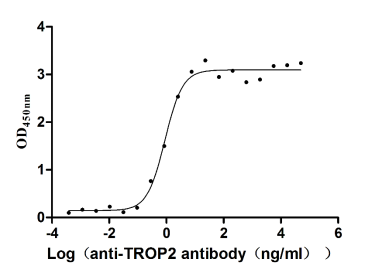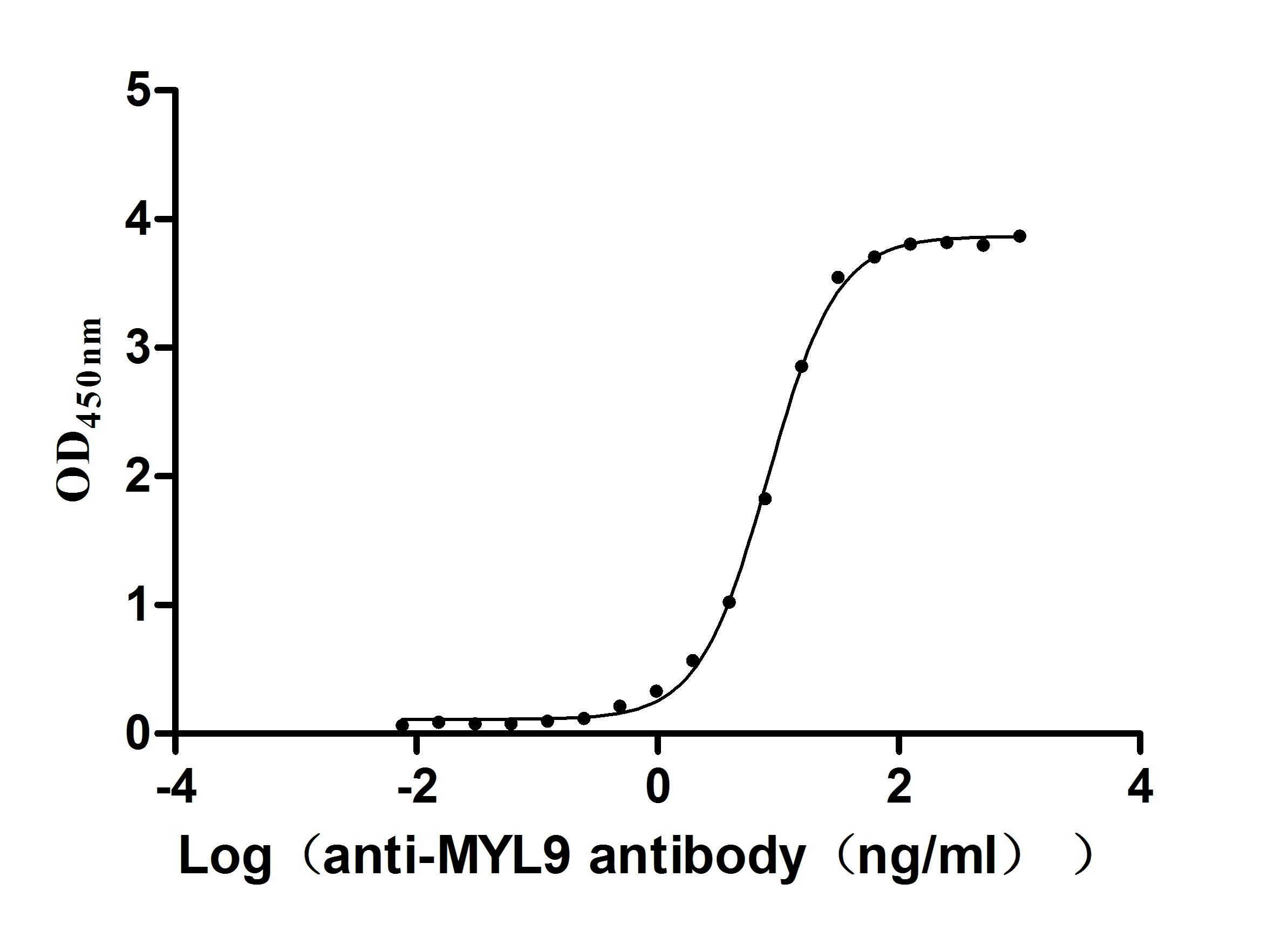Recombinant Mouse Sphingosine 1-phosphate receptor 5 (S1pr5), partial
-
中文名稱:小鼠S1pr5重組蛋白
-
貨號:CSB-YP838693MO1
-
規(guī)格:
-
來源:Yeast
-
其他:
-
中文名稱:小鼠S1pr5重組蛋白
-
貨號:CSB-EP838693MO1
-
規(guī)格:
-
來源:E.coli
-
其他:
-
中文名稱:小鼠S1pr5重組蛋白
-
貨號:CSB-EP838693MO1-B
-
規(guī)格:
-
來源:E.coli
-
共軛:Avi-tag Biotinylated
E. coli biotin ligase (BirA) is highly specific in covalently attaching biotin to the 15 amino acid AviTag peptide. This recombinant protein was biotinylated in vivo by AviTag-BirA technology, which method is BriA catalyzes amide linkage between the biotin and the specific lysine of the AviTag.
-
其他:
-
中文名稱:小鼠S1pr5重組蛋白
-
貨號:CSB-BP838693MO1
-
規(guī)格:
-
來源:Baculovirus
-
其他:
-
中文名稱:小鼠S1pr5重組蛋白
-
貨號:CSB-MP838693MO1
-
規(guī)格:
-
來源:Mammalian cell
-
其他:
產(chǎn)品詳情
-
純度:>85% (SDS-PAGE)
-
基因名:S1pr5
-
Uniprot No.:
-
別名:S1pr5; Edg8; Lpb4; Sphingosine 1-phosphate receptor 5; S1P receptor 5; S1P5; Endothelial differentiation G-protein-coupled receptor 8; Lysophospholipid receptor B4; Sphingosine 1-phosphate receptor Edg-8; S1P receptor Edg-8
-
種屬:Mus musculus (Mouse)
-
蛋白長度:Partial
-
蛋白標簽:Tag?type?will?be?determined?during?the?manufacturing?process.
The tag type will be determined during production process. If you have specified tag type, please tell us and we will develop the specified tag preferentially. -
產(chǎn)品提供形式:Lyophilized powder
Note: We will preferentially ship the format that we have in stock, however, if you have any special requirement for the format, please remark your requirement when placing the order, we will prepare according to your demand. -
復溶:We recommend that this vial be briefly centrifuged prior to opening to bring the contents to the bottom. Please reconstitute protein in deionized sterile water to a concentration of 0.1-1.0 mg/mL.We recommend to add 5-50% of glycerol (final concentration) and aliquot for long-term storage at -20℃/-80℃. Our default final concentration of glycerol is 50%. Customers could use it as reference.
-
儲存條件:Store at -20°C/-80°C upon receipt, aliquoting is necessary for mutiple use. Avoid repeated freeze-thaw cycles.
-
保質(zhì)期:The shelf life is related to many factors, storage state, buffer ingredients, storage temperature and the stability of the protein itself.
Generally, the shelf life of liquid form is 6 months at -20°C/-80°C. The shelf life of lyophilized form is 12 months at -20°C/-80°C. -
貨期:Delivery time may differ from different purchasing way or location, please kindly consult your local distributors for specific delivery time.Note: All of our proteins are default shipped with normal blue ice packs, if you request to ship with dry ice, please communicate with us in advance and extra fees will be charged.
-
注意事項:Repeated freezing and thawing is not recommended. Store working aliquots at 4°C for up to one week.
-
Datasheet :Please contact us to get it.
相關產(chǎn)品
靶點詳情
-
功能:Receptor for the lysosphingolipid sphingosine 1-phosphate (S1P). S1P is a bioactive lysophospholipid that elicits diverse physiological effect on most types of cells and tissues. Is coupled to both the G(i/0)alpha and G(12) subclass of heteromeric G-proteins. S1P activation on oligodendroglial cells modulates two distinct functional pathways mediating either process retraction or cell survival. S1P activation on O4-positive pre-oligodendrocytes induces process retraction via a Rho kinase/collapsin response-mediated protein signaling pathway. The S1P-induced survival of mature oligodendrocytes is mediated through a pertussis toxin-sensitive, Akt-dependent pathway. S1P activation on oligodendroglial cells modulates two distinct functional pathways mediating either process retraction or cell survival. These effects depend on the developmental stage of the cell.
-
基因功能參考文獻:
- reduced frequency of patrolling monocytes in bone marrow of KO mice PMID: 23519784
- Coordinated changes in CXCR4 and S1P5 responsiveness govern NK-cell trafficking. PMID: 21911833
- Fndings suggest that S1P(5) may mediate the effects of S1P in terms of regulating ERK-1/2 signaling in ES cells. PMID: 19228106
- The molecular identity, functional properties, and expression profile of the S1P5 (Edg-8) receptor have been characterized. PMID: 11705398
- The immune modulator FTY720 targets sphingosine 1-phosphate receptors. PMID: 11967257
- Edg8/S1P5 activation on oligodendroglial cells modulates two distinct functional pathways mediating either process retraction or cell survival and that these effects depend on the developmental stage of the cell. PMID: 15703400
- Sphingosine 1-phosphate receptors regulate chemokine-driven transendothelial migration of lymph node but not splenic T cells. PMID: 16116177
- KLF2 regulates T cell homeostasis at least partly by controlling CD62L and S1P1 expression, and therefore T cell egress from the thymus and circulation in the periphery. PMID: 17548599
- These findings identify S1P5 as a T-bet-induced gene that is required for natural killer cell egress from lymph nodes and bone marrow. PMID: 19808259
顯示更多
收起更多
-
亞細胞定位:Cell membrane; Multi-pass membrane protein.
-
蛋白家族:G-protein coupled receptor 1 family
-
組織特異性:Expressed in spleen and brain. In the CNS expression is restricted to oligodendrocytes.
-
數(shù)據(jù)庫鏈接:
Most popular with customers
-
Recombinant Human Angiotensin-converting enzyme 2 (ACE2), partial,Biotinylated (Active)
Express system: Mammalian cell
Species: Homo sapiens (Human)
-
Recombinant Human Nectin-4 (NECTIN4), partial (Active)
Express system: Mammalian cell
Species: Homo sapiens (Human)
-
Recombinant Human R-spondin-1 (RSPO1), partial (Active)
Express system: Mammalian cell
Species: Homo sapiens (Human)
-
Recombinant Human Carcinoembryonic antigen-related cell adhesion molecule 6 (CEACAM6) (Active)
Express system: Mammalian cell
Species: Homo sapiens (Human)
-
Recombinant Human Tumor-associated calcium signal transducer 2 (TACSTD2), partial (Active)
Express system: Mammalian cell
Species: Homo sapiens (Human)
-
Recombinant Human Myosin regulatory light polypeptide 9 (MYL9) (Active)
Express system: Yeast
Species: Homo sapiens (Human)
-
Recombinant Human Interleukin-2 receptor subunit alpha (IL2RA), partial (Active)
Express system: Mammalian cell
Species: Homo sapiens (Human)
-
Recombinant Human Myosin regulatory light chain 12B(MYL12B) (Active)
Express system: E.coli
Species: Homo sapiens (Human)



